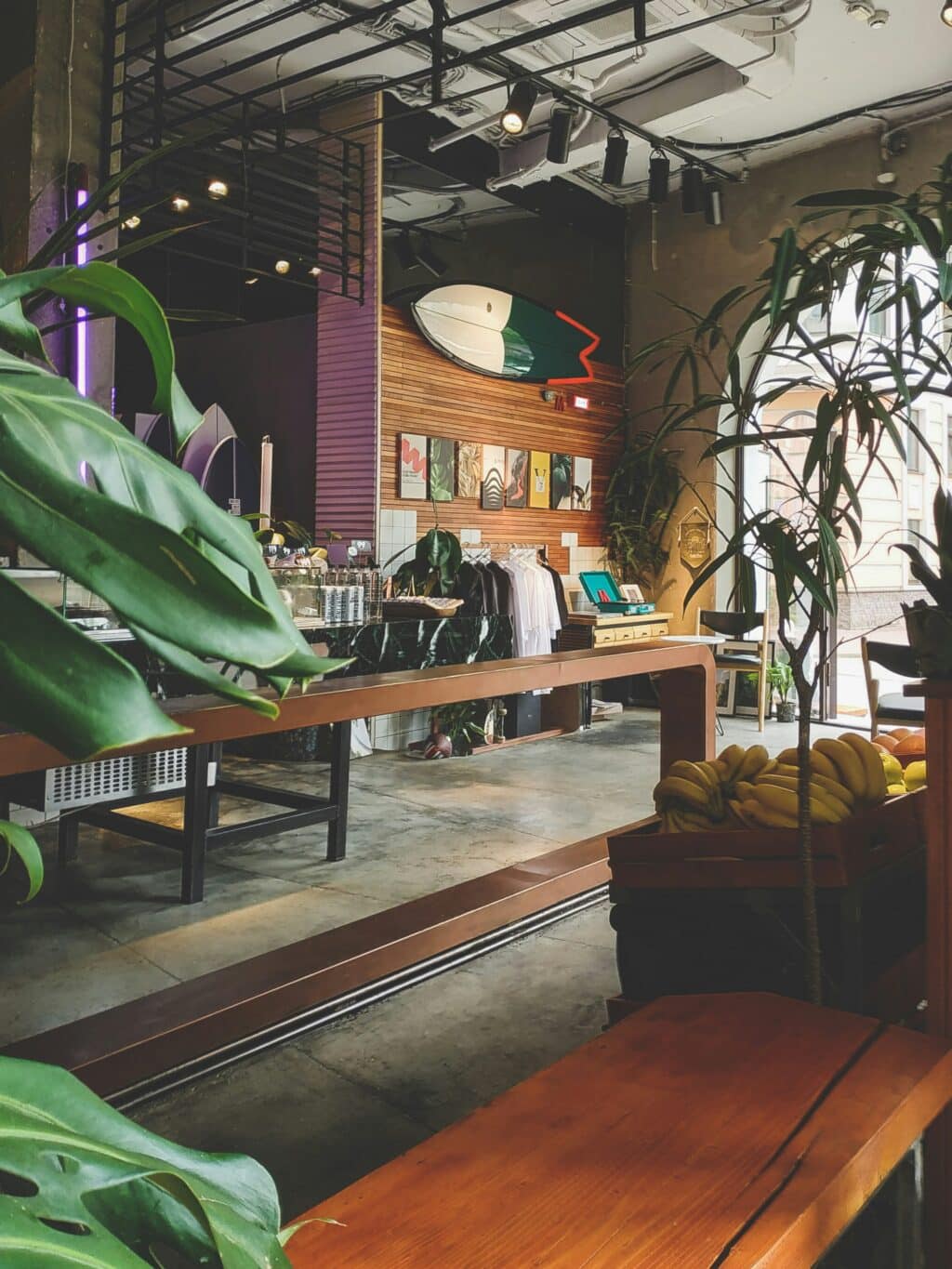Retail track lighting is now a key part of designing commercial spaces. It helps highlight products, set the mood, and improve the overall shopping experience, making it essential for modern retail.
With fast changes in lighting technology and shifting consumer expectations, retailers need to keep up with the latest trends and best practices. Knowing how to use track lighting well can greatly enhance the look and performance of a store, boosting both customer satisfaction and sales.
This guide offers a detailed look at the current trends in retail track lighting design and layout for stores. It covers the basics, popular styles, and practical layouts that maximize lighting effects. It also discusses smart technology and the need for adaptable, flexible lighting solutions.
These insights aim to help retailers design an attractive and effective lighting system tailored to their store’s needs.
IMAGE: UNSPLASH
The Basics Of Track Lighting
To understand track lighting basics, it’s important to look at its main parts and how it benefits retail spaces. Track lighting includes the track, fixtures, and bulbs, all working together to provide focused, flexible light.
This setup makes it easy to change the lighting, which is useful in stores where displays change frequently.
There are different types of track lighting, like linear, monorail, or cable systems, to fit various design styles and needs. Adjustable heads and dimmable options add to their versatility.
Track lighting can be tailored for any retail setting, whether to highlight products, create a cozy atmosphere, or draw attention to architectural features, enhancing both look and function.
Current Trends In Track Lighting Design
Current trends in track lighting design emphasize simplicity and raw aesthetics. Minimalist fixtures, with their clean lines and sleek profiles, are increasingly popular, seamlessly integrating into modern retail spaces. In contrast, industrial designs with exposed hardware, rugged metals, and vintage-inspired bulbs create a sense of authenticity and strength.
A growing trend is the use of mixed materials, like combining brushed metal with warm wood or textured glass, to produce striking, one-of-a-kind lighting. These varied styles enhance visual appeal and offer retailers the flexibility to align their lighting with their brand image and interior decor.
Whether seeking sleek elegance, a cozy rustic feel, or an eclectic mix, today’s track lighting designs provide the versatility to achieve the perfect ambiance.
Effective Layout Strategies For Track Lighting
To get the best lighting in your retail space, try different layout strategies based on your needs. Start by using track lighting to highlight key products and draw customer attention. Spotlights can make merchandise stand out against a well-lit background.
Make sure the store is evenly lit to create a comfortable shopping experience.
A mix of task and ambient lighting creates an inviting atmosphere and helps customers see products clearly. L-shaped or U-shaped track setups work well in larger stores, guiding customers through various sections.
By planning your layout and using different lighting techniques, you can boost the visual appeal and function of your retail space.
Incorporating Smart Technology In Track Lighting
Incorporating smart technology into track lighting can greatly enhance the retail experience by making the system more responsive and energy-efficient. Smart controls allow store managers to effortlessly adjust lighting settings, including brightness, color, and direction, to highlight specific areas or products.
Automated schedules can further optimize usage, with lights turning on and off based on store hours or tasks like cleaning and restocking.
This boosts operational convenience while cutting down on energy waste, contributing to sustainability goals. Smart lighting can also adapt to real-time conditions, such as changing daylight or customer traffic, to maintain the perfect ambiance.
Overall, this integration of smart technology offers a dynamic, customizable lighting solution that enhances both the aesthetic appeal and functionality of retail spaces.
Customization And Flexibility In Track Lighting
The constantly changing nature of retail spaces makes customization and flexibility in track lighting essential. Adjustable fixtures and modular designs allow for easy adaptation to changing store layouts and displays. These systems provide consistent lighting and focus where it’s needed most by allowing adjustments as products and layouts shift.
Features like pivoting heads and adjustable beams enable tailored lighting schemes to suit specific retail needs. Additionally, modular track systems that can be easily expanded or adjusted support dynamic retail environments, ensuring lighting adapts seamlessly with store changes.
This flexibility enhances the shopping experience and helps retailers maintain an engaging, well-lit atmosphere that boosts customer satisfaction and sales.
Mastering track lighting is essential for retailers seeking to create an inviting and functional shopping environment. By understanding the basics and keeping up with current design trends, stores can enhance their visual appeal and customer experience.
Strategic layout and the integration of smart technology allow for dynamic, energy-efficient lighting that can adapt to various needs. Customization and flexibility are key, enabling retailers to easily adjust their lighting to align with changing displays and customer flow.
With these approaches, track lighting becomes a powerful tool that elevates both the atmosphere and performance of retail spaces.
IMAGE: UNSPLASH
If you are interested in even more business-related articles and information from us here at Bit Rebels, then we have a lot to choose from.


COMMENTS